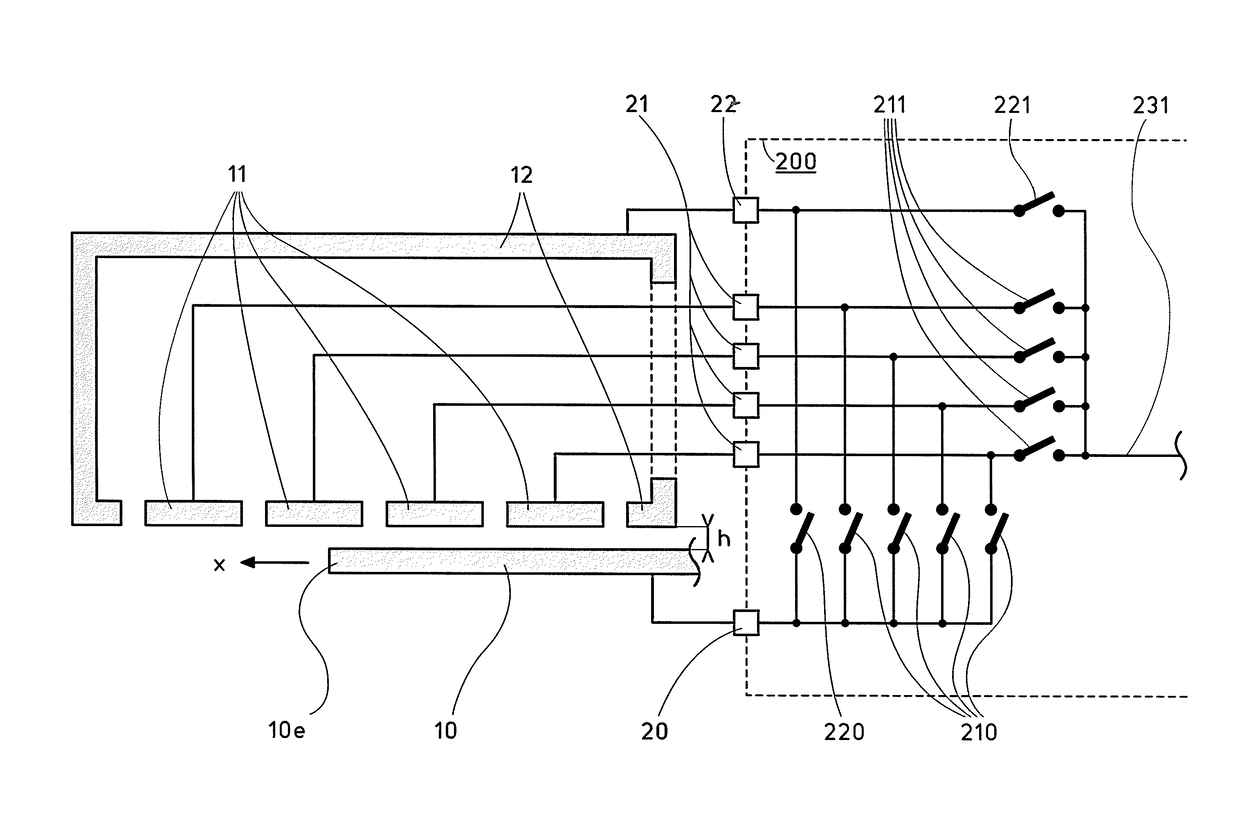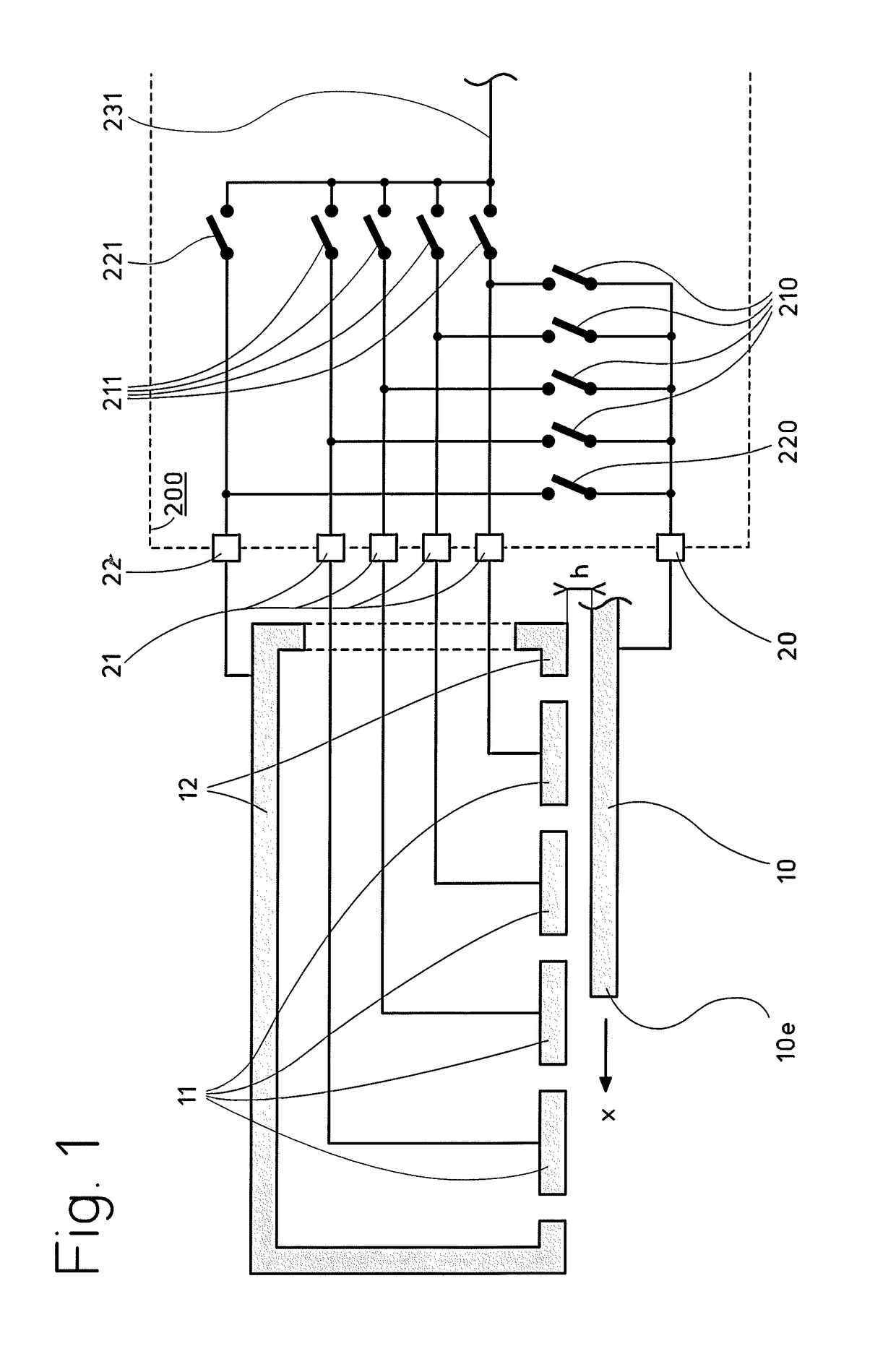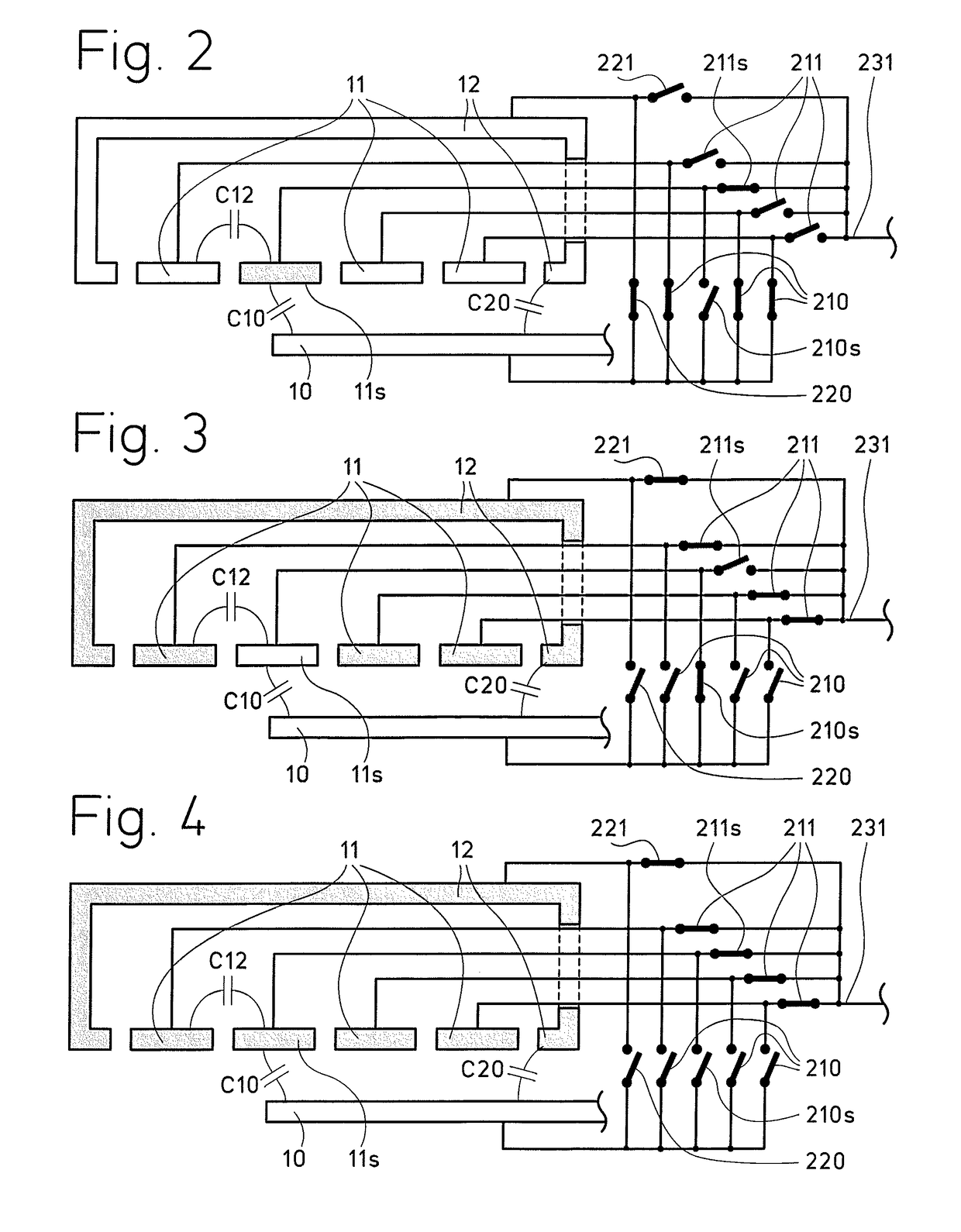Position sensing device and method using self-capacitance
a position sensing and self-capacitance technology, applied in the direction of pulse technique, electrical/magnetic thickness measurement, instruments, etc., can solve the problems of difficult monitoring of contamination, unprogrammable integrated circuit, and high probability of unreliable sensors
- Summary
- Abstract
- Description
- Claims
- Application Information
AI Technical Summary
Benefits of technology
Problems solved by technology
Method used
Image
Examples
Embodiment Construction
[0033]The position sensors described here are based on measuring an electrode's self-capacitance, in order to use microcontrollers with integrated touch-sensing electronics, but of course any suitable circuit measuring self-capacitance could be used instead. The circuit must be able to measure the self-capacitance on one or a plurality of sensing pads or pins by switching them to a capacitance-to-digital converter linear enough for the required accuracy, while switching the remaining sensing pads to ground.
[0034]By way of example, a capacitive sensing microcontroller meeting these requirements is the Silicon Labs C8051F99x, measuring the self-capacitance of a sensing pad or of any group of up to 14 sensing pads by connecting them to a successive-approximation capacitance-to-digital converter of the type disclosed in U.S. Pat. No. 8,193,822 to Welland. The converter's most sensitive range is around 60 pF and at its default resolution of 13 bit one conversion takes about 25 μs.
[0035]F...
PUM
 Login to View More
Login to View More Abstract
Description
Claims
Application Information
 Login to View More
Login to View More - R&D
- Intellectual Property
- Life Sciences
- Materials
- Tech Scout
- Unparalleled Data Quality
- Higher Quality Content
- 60% Fewer Hallucinations
Browse by: Latest US Patents, China's latest patents, Technical Efficacy Thesaurus, Application Domain, Technology Topic, Popular Technical Reports.
© 2025 PatSnap. All rights reserved.Legal|Privacy policy|Modern Slavery Act Transparency Statement|Sitemap|About US| Contact US: help@patsnap.com



